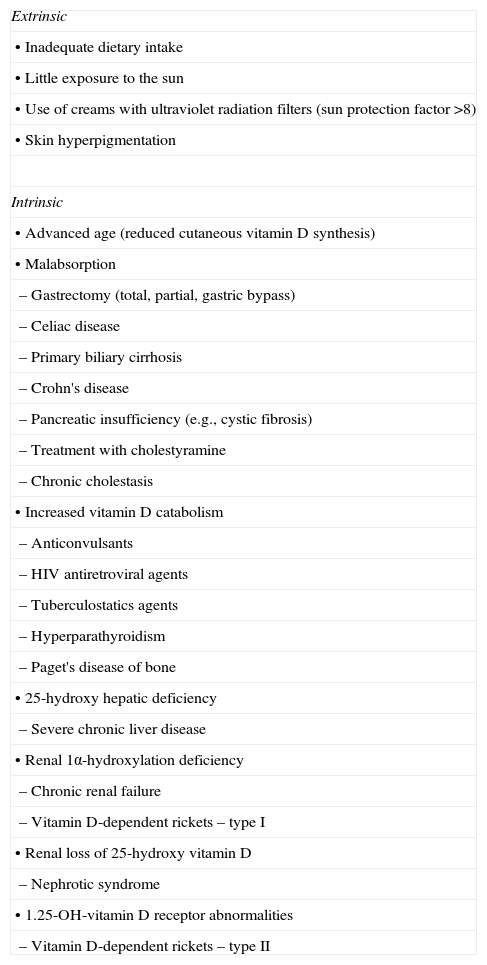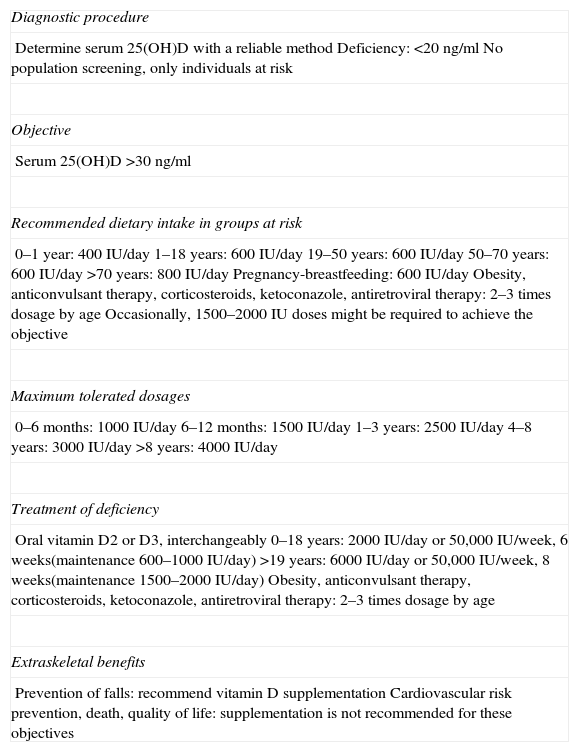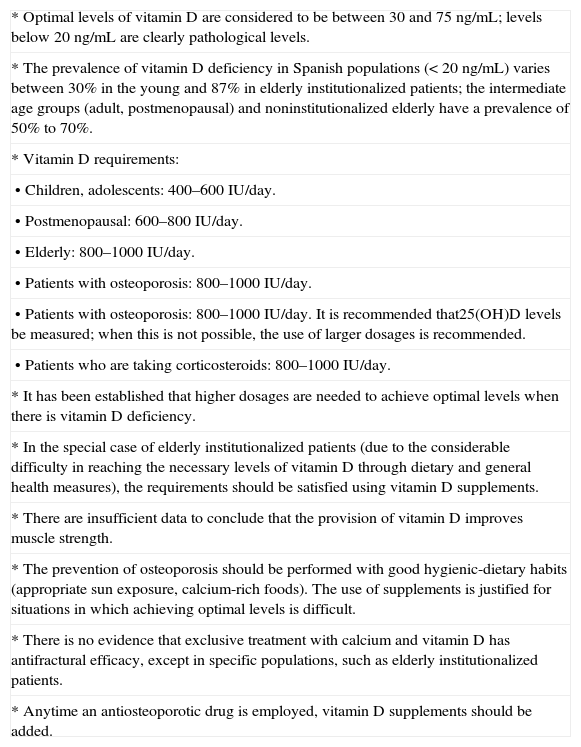In recent years there has been a growing interest in vitamin D, not only for its important role in the bone mineral metabolism, but also for the extra-osseous effects. Most of the scientific societies consider that deposits are sufficient if the serum concentration of 25-OH vitamin D is above 30ng/ml and are considered deficient if levels are below 20ng/ml. The majority of studies found that supplements of calcium plus vitamin D have a positive effect in reducing the risk of fracture and the risk of falls in the elderly, although several specifies that doses should be 700–1000IU daily. The treatment of the deficit can be performed with vitamin D2, D3 as well as calcidiol or the active metabolite calcitriol. In certain pathologies also selective vitamin D receptor activators can be used.
En los últimos años se ha producido un creciente interés por la vitamina D, no solo por su importante papel en el metabolismo mineral óseo, sino también por sus efectos extraóseos. La mayoría de las sociedades científicas consideran que los depósitos son suficientes si la concentración plasmática de 25-OH vitamina D está por encima de 30ng/ml y deficientes si están por debajo de 20ng/ml. La mayoría de los estudios encuentran que los suplementos de calcio más vitamina D tienen un efecto positivo en la reducción del riesgo de fractura en un 20% aproximadamente y del riesgo de caída en los ancianos, y las dosis deberían ser de 700–1.000 UI diarias. El tratamiento del déficit se puede realizar con vitamina D2, D3 o sus metabolitos activos como el calcidiol o el calcitriol. En ciertas patologías también puede utilizarse los activadores selectivos del receptor de la vitamina D.
Article
Diríjase desde aquí a la web de la >>>FESEMI<<< e inicie sesión mediante el formulario que se encuentra en la barra superior, pulsando sobre el candado.

Una vez autentificado, en la misma web de FESEMI, en el menú superior, elija la opción deseada.

>>>FESEMI<<<








